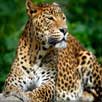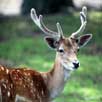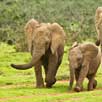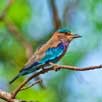National parks
© Copyright 2024-25 by GTI Travels Pvt. Ltd.
A UNESCO world heritage site, the Kaziranga National Park is the marvel of Nature nestled beautifully in the heart of Assam enriching the wildlife of this northeastern state of India. Known for being the natural habitat of the largest number of one-horned Rhinoceros in the world, the lush forest of Kaziranga is the significant addition to the Indian wildlife conservation efforts.

Kaziranga National Park designated as the Tiger Reserve forest and effectively helps in the conservation of the endangered species like Royal Bengal Tiger and One-horned Rhinoceros. With the big five wild animals as its fauna which are Tiger, Rhino, Elephant, Water Buffalo and Swamp Deer, the Kaziranga National Park is one of the most popular wildlife destinations in India and visited by the wildlife tourist from all over the world.

Spread over an area of around 430 sq km in the Brahmaputra River floodplain, the Kaziranga forest is the largest stretch of untouched terrain in the Brahmaputra Valley floodplain. The Kaziranga forest is considered as the finest wildlife habitat in the world and a celebrated wildlife tourist destination. Numerous riverine, lakes, water bodies and wetlands are the result of the unbridled water level of the Brahmaputra River in the monsoon season, which further escalate the growth of the large grassland, patches of deciduous to evergreen lush forest and also quench the thirst of a large array of different species of wild fauna, and nourishes the wildlife of Kaziranga.

The rich fauna of the Kaziranga primarily include the endangered one-horned Rhinos, one of the famous amulets of Indian Wildlife tourism along with Royal Bengal Tigers, Indian Elephant, wild water buffalo, Sloth Bear, Wild boar, Leopard, Hoolock Gibbon, Golden Langur, various species of deer and many others. The Kaziranga also boasts of a large number of exotic birds, both domestic and migrant such as Crested Serpent Eagle, Gray Headed Fishing Eagle, Palla's Eagle, Greater Adjutant Stork, Bar Headed Geese, Pelicans, Whistling Teal and others. If you will be lucky then you can get the sight of the endangered Bengal Floricans which are very rare. The aqua fauna species found in its rivers of Kaziranga are also an attraction on its own. The rivers of Kaziranga also conserve the endangered Ganges Dolphins which are on the verge of extinction.

In order to provide the opportunity to explore the wildlife in the dense forest of Kaziranga, the forest authority organizes Jeep Safari and Elephant Safari for the tourists. The park is divided into the four ecotourism zones which are the central zone or Kaziranga zone, eastern zone or Agaratoli zone, western zone or Bagori zone and the Burapahar zone. The Jeep Safari which is organized in the two shifts (morning and afternoon shifts) is available in all the four zones while the elephant safari which is also organized in the two shifts (both morning shifts) is available only in the Central zone and Western zone. Burapahar offers an extra facility of trekking in the park on the designated trek route along with the Jeep Safari. Any other zone except the Burapahar zone doesn't allow the trekking or walking inside the park for the tourists. Whether for the Jeep Safari or Elephant Safari or Trekking, you have to obtain the required permit to avail the facility.

The Kaziranga Park remains open for the tourists from the month of November to April every year and closed for the remaining months of the year due to the monsoon season. However, the closing time may get extended if the park gets flooded heavily due to the unrestrained heavy flood in the Brahmaputra River as most of the park area gets under the flood water. So, you can visit the park from November to April and this is the best to visit Kaziranga as the weather is pleasant during this time except the few days in the peak winter season. The entire forest is gleaming with the greenery when the park opens in November after the rainy season ends. So, the November is the best time visit to view the wildlife at its best.